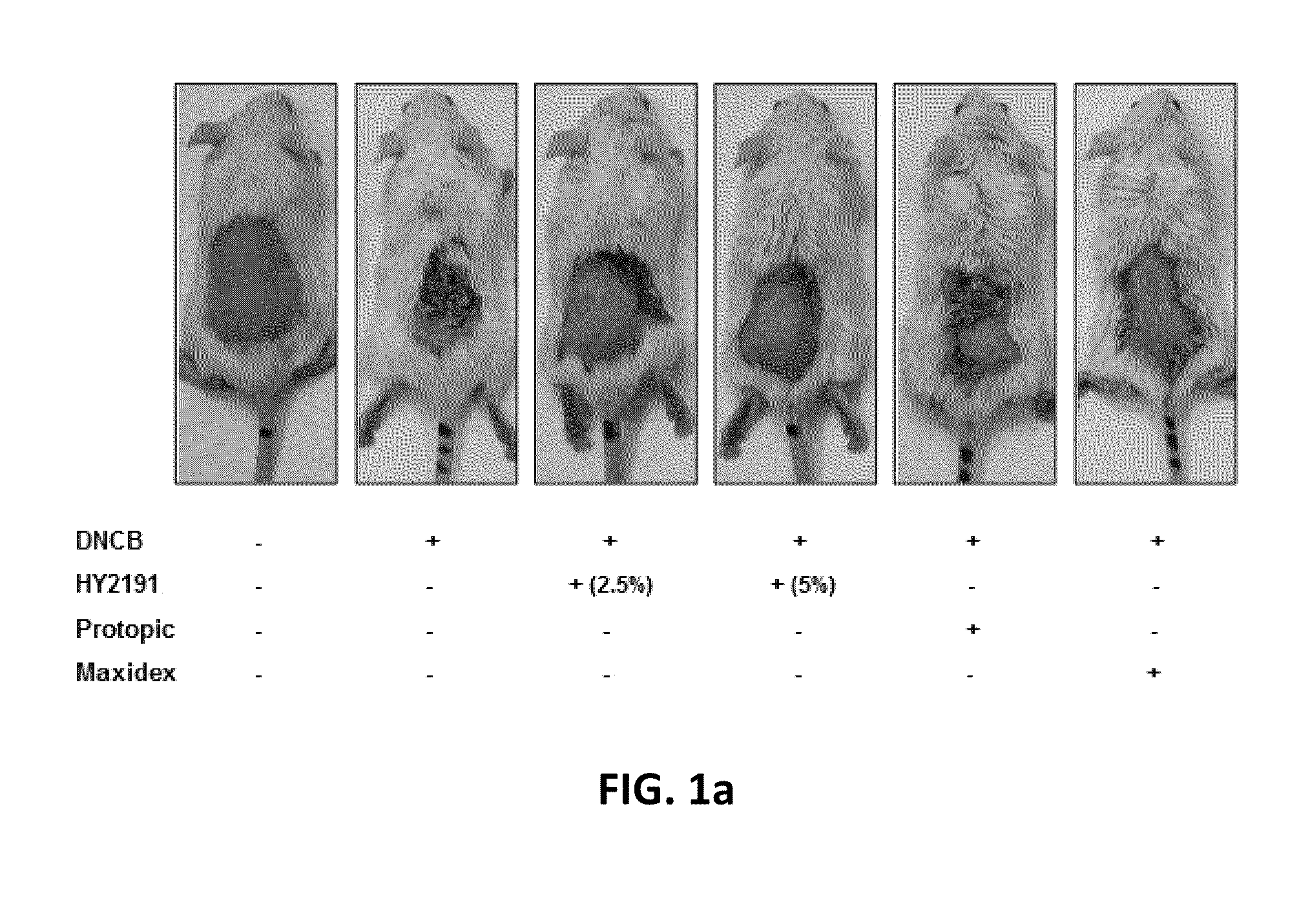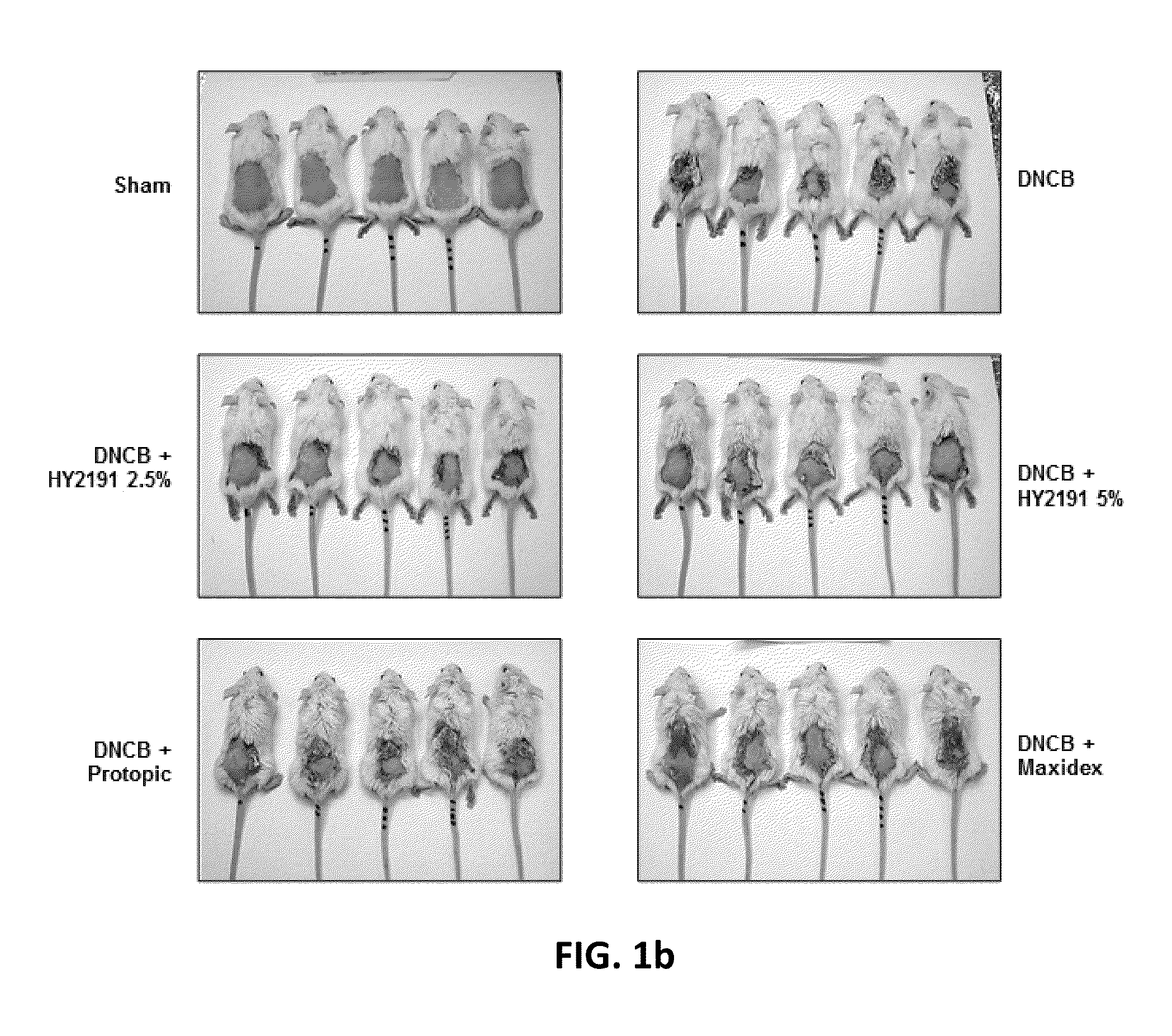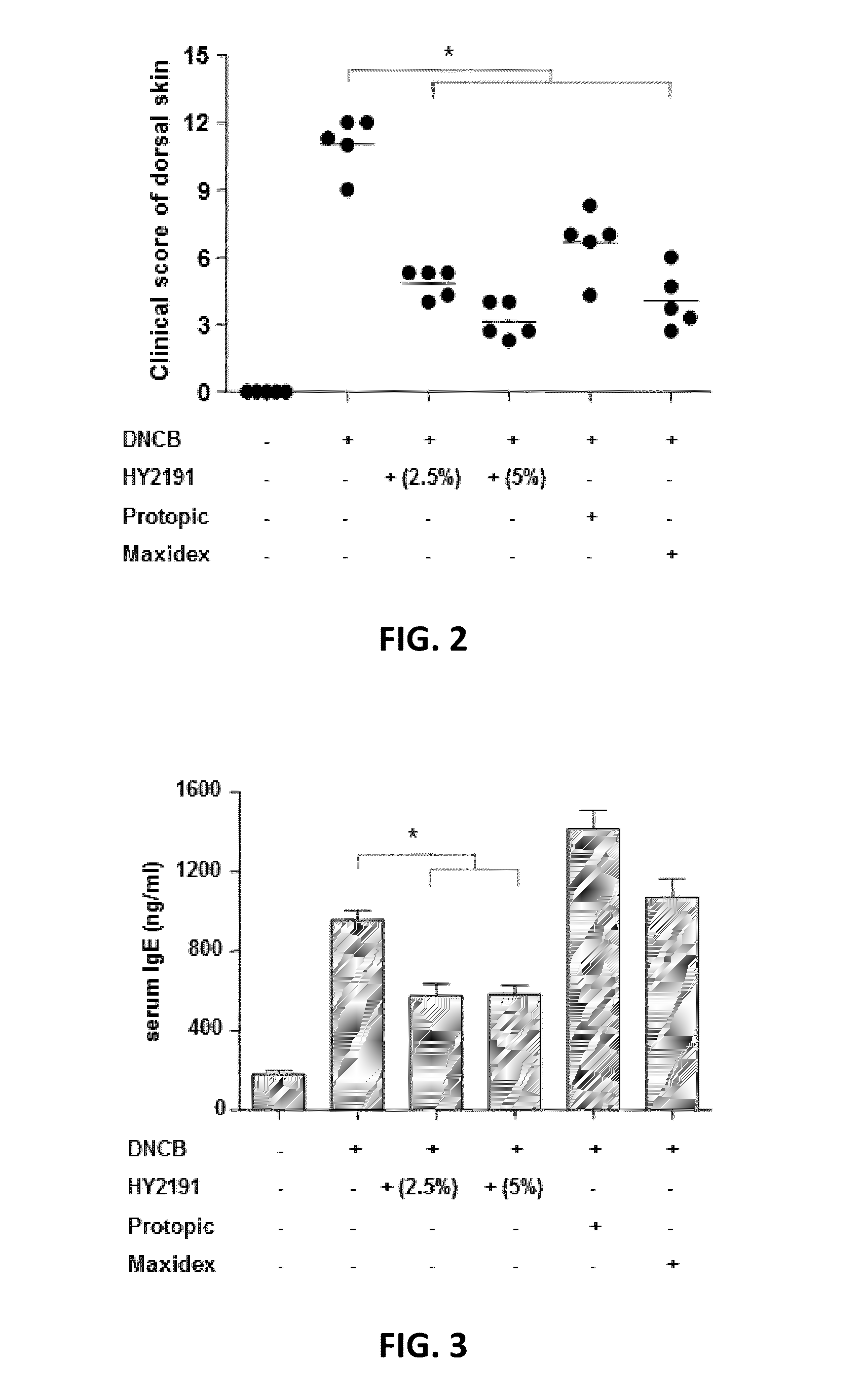Composition Comprising GPCR19 Agonist as an Active Ingredient for Preventing or Treating Allergic Dermatitis
a technology of gpcr19 and agonist, which is applied in the direction of drug compositions, hair cosmetics, immunodeficiency disorders, etc., can solve the problems of increasing the financial burden of the society for the prevention and treatment of atopic dermatitis, the initiation and pathogenesis of atopic dermatitis, and the quality of life of patients with atopic dermatitis is very poor, and achieves excellent effect in treating and improving allergic dermatitis
- Summary
- Abstract
- Description
- Claims
- Application Information
AI Technical Summary
Benefits of technology
Problems solved by technology
Method used
Image
Examples
experimental example 1
Animal Model of Atopic Dermatitis
[0061]In order to test efficacy of the sodium taurodeoxycholate (HY2191) composition on atopic dermatitis, dermatitis lesion was induced at the shaved-back of 6 weeks old male Balb / C mice. DNCB (2,4-dinitro-1-chlorobenzene, Sigma) was used as a hapten.
[0062]Five mice for each group were tested. The amount of IgE in blood of mice was measured to evaluate an inhibitory effect of a medication on IgE production. To make skin lesion of atopic dermatitis, 100 μL of a DNCB solution (2.5% in acetone) was applied on the shaved-back of the mouse at day 1. One hundred μL of DNCB (1% in acetone) was applied at day 4 and 100 μL of 0.2% DNCB in acetone at day 10.
[0063]From the day 7 to the day 14, 100 μL of the composition of 2.5% or 5% sodium taurodeoxycholate (HY2191) of example 1 was applied on the back of mice twice a day. Maxidex ointment (Dexamethasone, Alcon Korea) and Protopic ointment (Tacrolimus, Astellas Pharma Korea) were used for positive control grou...
experimental example 2
Efficacy of Sodium Taurodeoxycholate on Atopic Dermatitis Evaluated by Gross Pathology and Clinical Scores Calculated Thereby
[0064]In order to evaluate the efficacy of sodium taurodeoxycholate (HY2191) on atopic dermatitis, atopic dermatitis was induced on shaved-back of Balb / C mice with DNCB according to experimental example 1 and clinical scores of atopic dermatitis lesions incurred on the back of animal model was evaluated on day 15. To evaluate clinical scores at day 15, (1) the frequency of scratching for 2 minutes, (2) the severity of erythema / hemorrhage, (3) edema, (4) excoriation / erosion, and (5) scaling / dryness were graded and were scored from 0 (none) to 3 (severe), making the worst score 15 for the most severe subject. The every subject in every group was evaluated by three people in a double-blind method. The mean clinical score of individual mouse was calculated.
[0065]Compared to the negative control group that was treated with vehicle only without sodium taurodeoxychol...
experimental example 3
Efficacy of Sodium Taurodeoxycholate on Atopic Dermatitis Evaluated by Measuring Serum Cytokines
[0066]After the clinical evaluation described at Experimental Example 2, a mixture containing 0.4% of Zoletil (Virbac, Milano Italy) and 0.04% of Rompun (Bayer Korea) in normal saline was injected i.p. to anesthetize each mouse. Blood samples were collected from the heart of the mice. The serum was prepared to measure the concentration of IgE using enzyme immunoassay (Mouse IgE ELISA, BD). ELISA kits (eBioscience) were used to measure concentrations of TH1 cytokines (IFN-γ, IL-2) or TH2 cytokine (IL-4) in the serum.
[0067]As shown in FIG. 3, the serum IgE levels were significantly lower in the group of mice treated with sodium taurodeoxycholate (HY2191), compared with the mice in positive control groups (groups of mice treated with Maxidex ointment or Protopic ointment). It clearly shows that 2.5% or 5% sodium taurodeoxycholate (HY2191) is effective in inhibiting serum IgE production, a pa...
PUM
| Property | Measurement | Unit |
|---|---|---|
| thickness | aaaaa | aaaaa |
| morphology | aaaaa | aaaaa |
| time | aaaaa | aaaaa |
Abstract
Description
Claims
Application Information
 Login to View More
Login to View More - R&D
- Intellectual Property
- Life Sciences
- Materials
- Tech Scout
- Unparalleled Data Quality
- Higher Quality Content
- 60% Fewer Hallucinations
Browse by: Latest US Patents, China's latest patents, Technical Efficacy Thesaurus, Application Domain, Technology Topic, Popular Technical Reports.
© 2025 PatSnap. All rights reserved.Legal|Privacy policy|Modern Slavery Act Transparency Statement|Sitemap|About US| Contact US: help@patsnap.com



